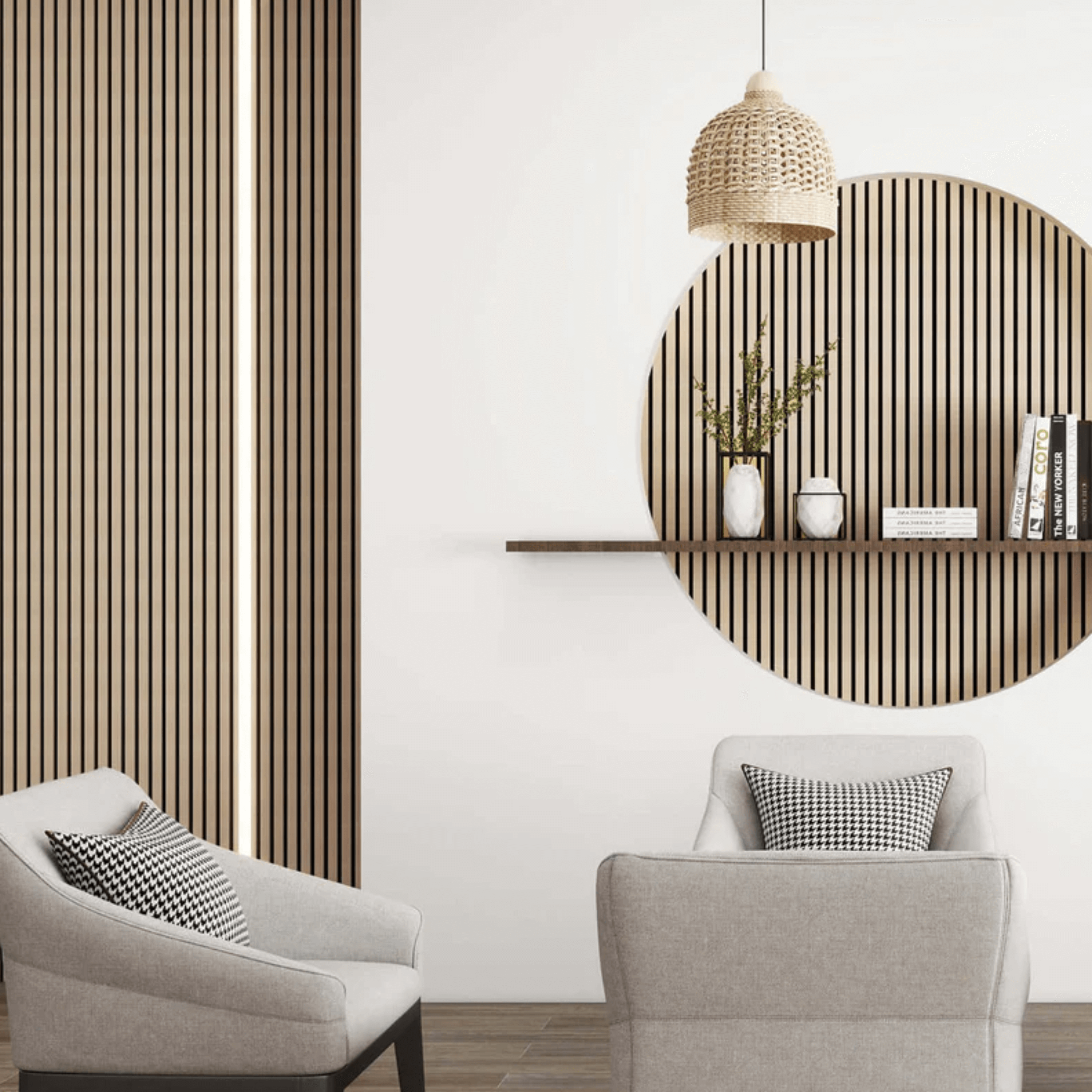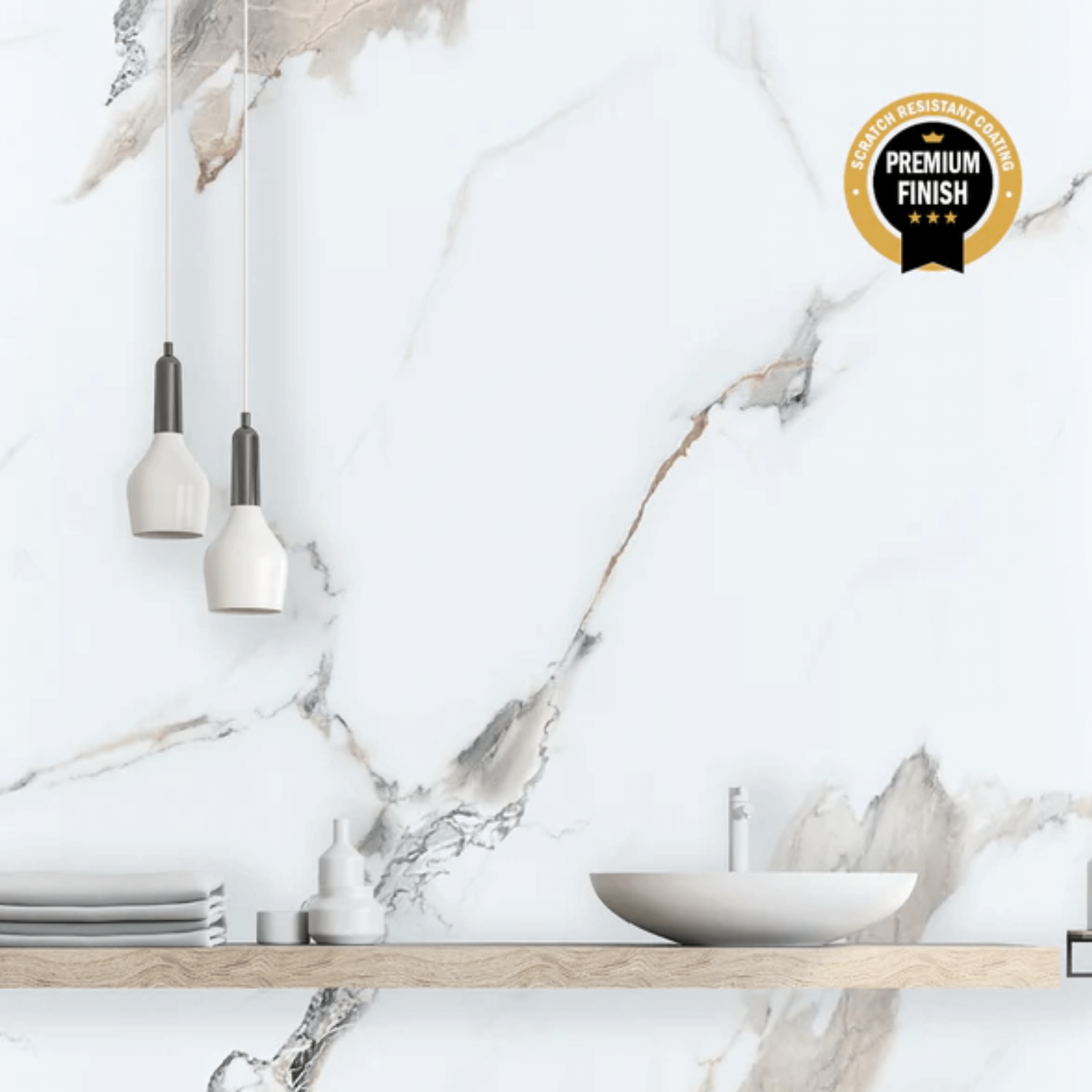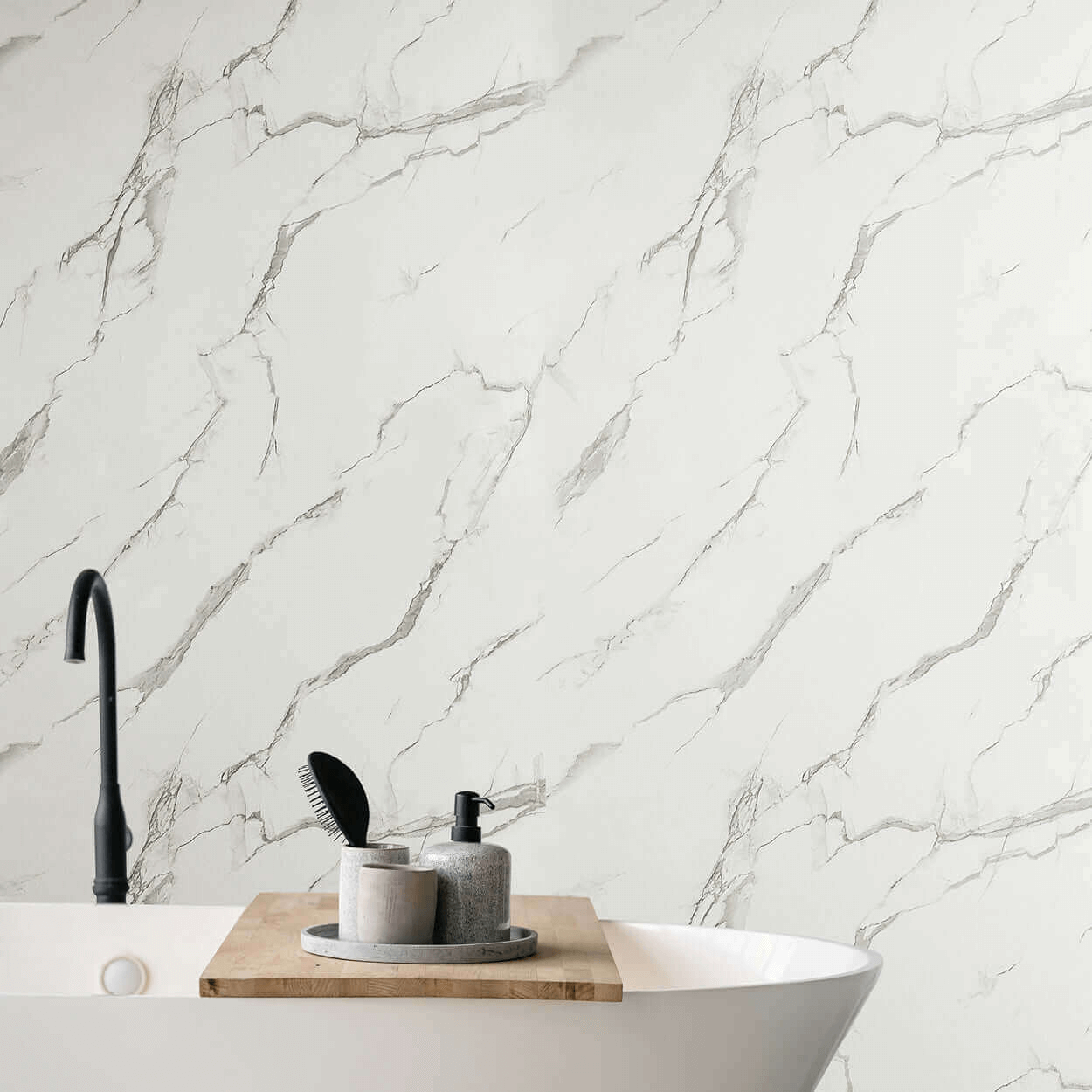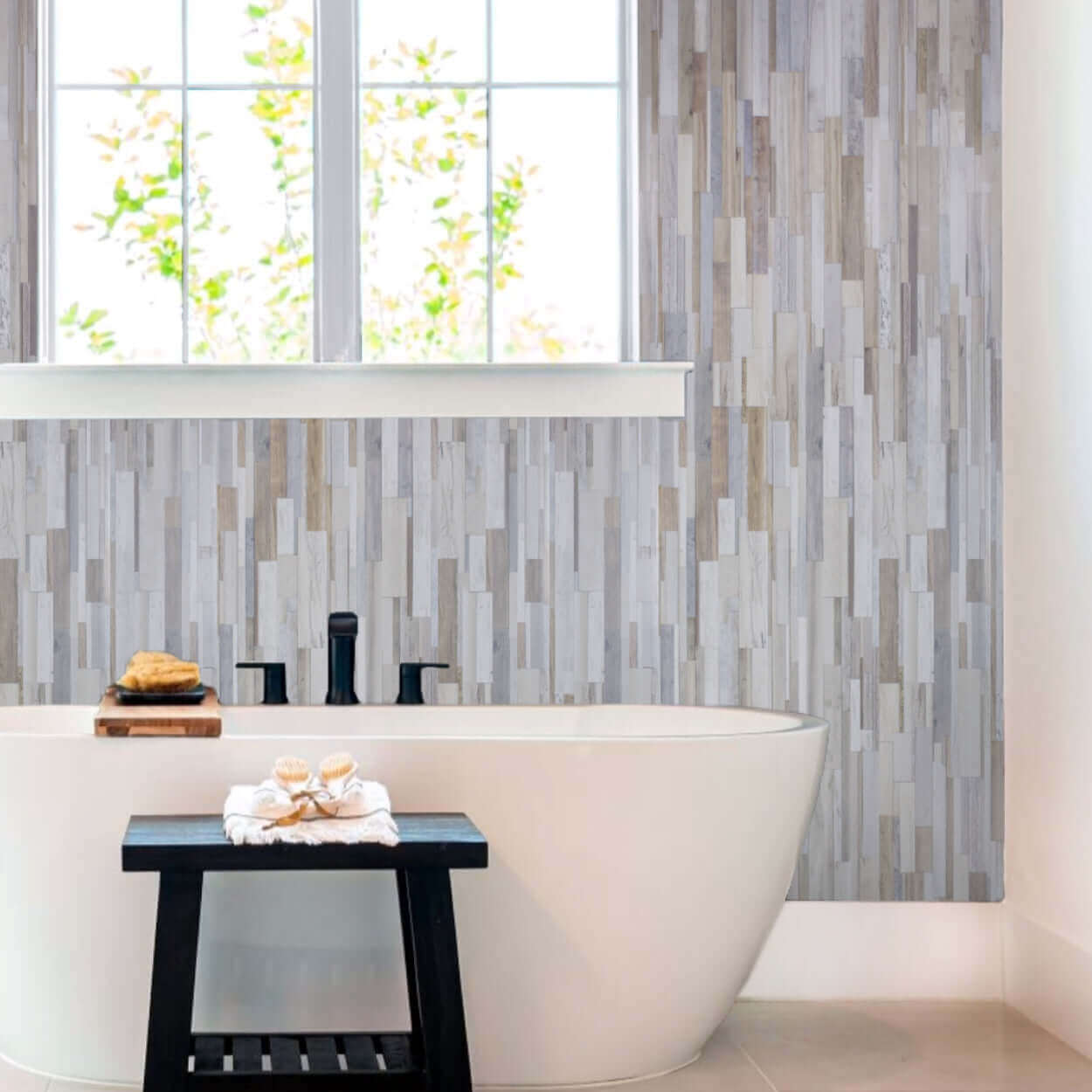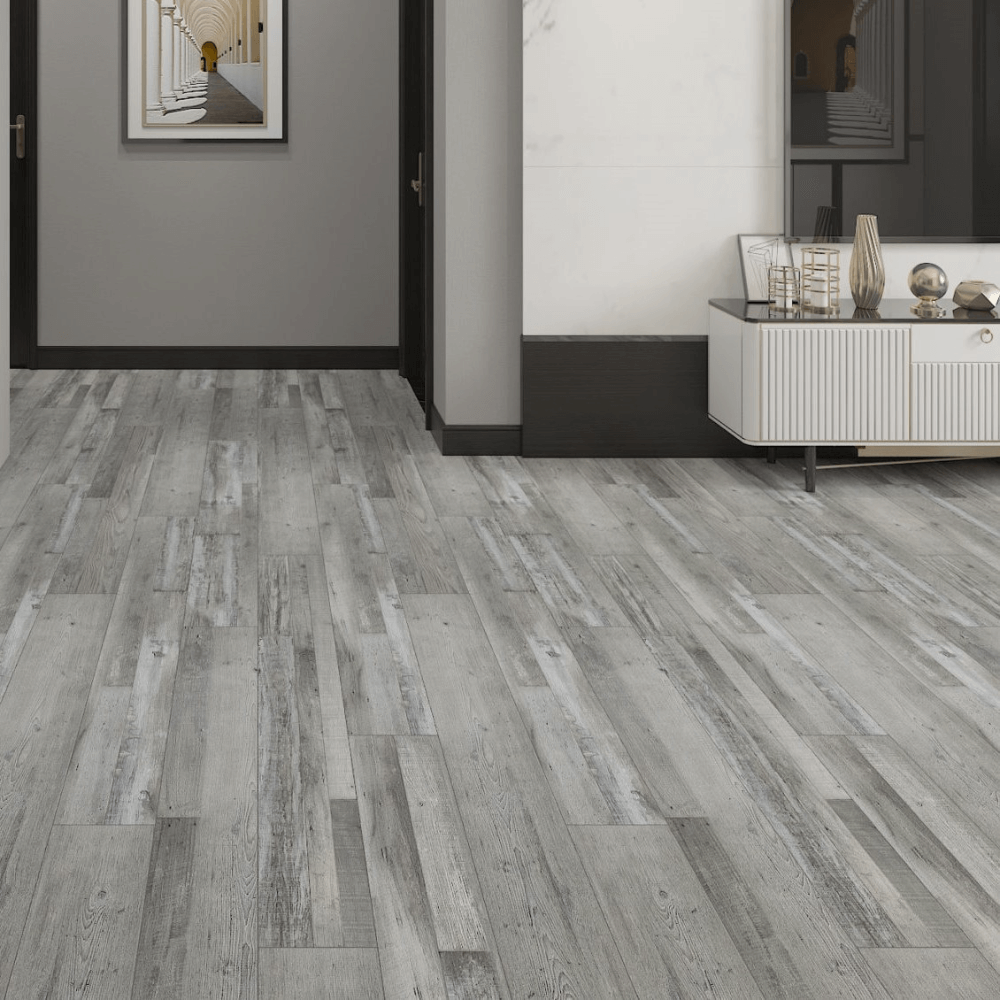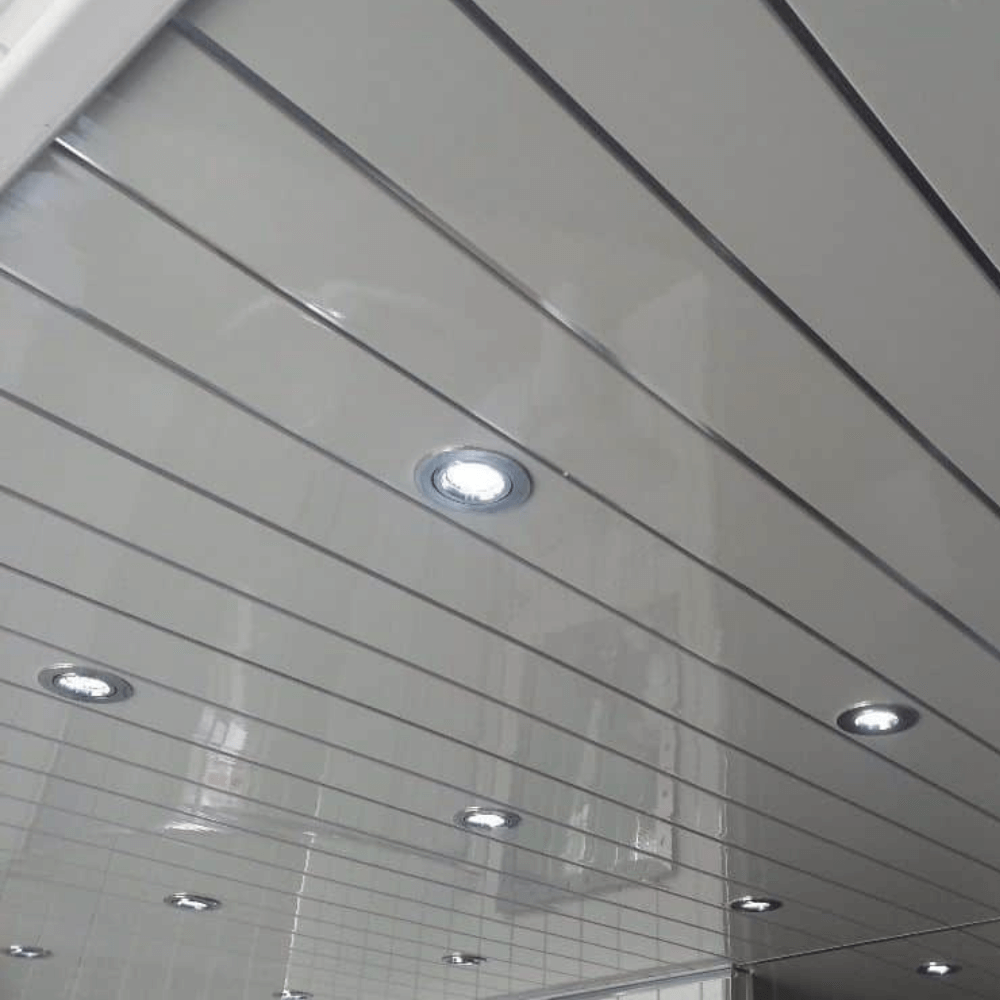Understanding Why Mould Grows on Bathroom Ceilings
A single hot shower can release over a litre of water into the air as steam. This warm, moist air naturally rises, and when it hits the cooler surface of your ceiling, it condenses back into water droplets. This is where the problem begins. Mould thrives on three things: moisture, warmth, and an organic food source. Your bathroom provides the first two, and traditional building materials like plasterboard and standard paint supply the third.
Unlike tiles or glass, plasterboard acts like a sponge, absorbing this constant dampness. This creates the perfect breeding ground for mould spores to embed themselves and grow. The ceiling is often the worst affected area because it traps the rising steam. This constant exposure makes preventing bathroom mould almost impossible with conventional materials. This persistent dampness on porous surfaces is precisely why many homeowners are now exploring dedicated waterproof ceiling panels for bathrooms as a modern alternative.

A Practical Guide to Removing Existing Mould Safely
Before considering a long-term fix, you need to address the mould you can see. Tackling this is the first step in learning how to stop mould on bathroom ceiling surfaces from getting worse. However, safety must come first. The spores can be harmful if inhaled, so it is important to protect yourself properly.
Before you start, make sure you have the right protective gear:
- Rubber gloves to protect your hands from cleaning solutions.
- Safety goggles to shield your eyes from splashes.
- A face mask (FFP3 recommended) to avoid inhaling mould spores.
For cleaning, a simple solution of one part white vinegar to one part water in a spray bottle is often more effective than bleach. While bleach can whiten the stain, it doesn't always kill the underlying mould spores, meaning the problem can return quickly. Vinegar, on the other hand, is acidic and kills the roots of the mould.
Follow these steps for a thorough clean:
- Spray the vinegar solution directly onto the affected area until it is saturated.
- Leave it to work for at least one hour. Do not scrub immediately.
- After an hour, gently scrub the area with a soft brush to lift the mould.
- Wipe the surface clean with a damp cloth, then dry it completely with a separate, dry cloth.
Remember, this is a temporary measure. On a porous surface like painted plasterboard, the mould will almost certainly return. This cleaning process is essential, but it sets the stage for a permanent solution.
The Permanent Fix: Installing Moisture-Resistant Ceiling Panels
Cleaning mould from a painted ceiling is a reactive chore that never truly ends. The only way to stop the cycle is to remove the conditions mould needs to grow. This is where moisture resistant bathroom panels UK offer a definitive, long-term solution. Unlike plasterboard, our PVC panels are completely non-porous. They create an impermeable barrier that moisture simply cannot penetrate. With no water absorption, there is no dampness for mould to feed on.
Our waterproof ceiling panels for bathrooms provide several key advantages:
- Total Water Resistance: The 100% waterproof core means no moisture can get through, ever.
- Effortless Maintenance: Forget scrubbing. A simple wipe-down with a soft cloth is all that is needed to keep them looking pristine.
- Stunning Finishes: They transform one of the most overlooked parts of your room.
- Simple Installation: The panels are designed for a straightforward fit and can often be installed directly over your existing ceiling, minimising mess and disruption.
These benefits make our shower panels a smart investment for any bathroom, delivering both performance and style for your bathroom renovation ideas UK .
| Feature | Traditional Plasterboard & Paint | Waterproof PVC Panels |
|---|---|---|
| Moisture Resistance | Porous, absorbs moisture | Impermeable, repels all moisture |
| Mould Susceptibility | High risk, provides food source | Extremely low risk, no organic material |
| Maintenance | Requires regular scrubbing, repainting | Simple wipe-down with a soft cloth |
| Longevity | Can degrade, stain, and peel | Durable, waterproof, and long-lasting |
Note: This table compares standard materials with PVC panels to illustrate the fundamental differences in performance within a high-humidity bathroom environment.
Boosting Ventilation to Keep Humidity at Bay

While waterproof panels create a mould-proof surface on your ceiling, managing the room's overall humidity is essential for a completely healthy bathroom. Combining a non-porous surface with good airflow creates an environment where mould struggles to establish itself anywhere. This two-pronged approach is the most effective strategy for preventing bathroom mould for good.
Here are a few simple habits to adopt:
- Use an Extractor Fan: Always turn on your extractor fan before you shower or bathe and leave it running for 15-20 minutes afterwards to clear the steam.
- Open a Window: If possible, crack a window open during your shower. Even a small gap can make a big difference to airflow.
- Keep the Door Ajar: After you are finished, leave the bathroom door open to allow the remaining moist air to circulate and disperse throughout the house.
These small actions support the work of your new ceiling panels, protecting other surfaces in the room and ensuring your bathroom remains fresh and dry.
Maintaining Your New Mould-Free Bathroom
Once your new ceiling panels are installed, you can say goodbye to the frustrating cycle of scrubbing and repainting. The maintenance is refreshingly simple. A quick wipe with a damp cloth is all it takes to remove any dust or residue, keeping your ceiling looking as good as new. There is no need for harsh chemicals or abrasive cleaners.
By continuing the good ventilation habits we discussed, you will protect not just your ceiling but the entire room. This proactive approach shifts your focus from constantly fighting mould to simply enjoying a clean, hygienic, and beautiful space. It is a one-time upgrade that provides lasting peace of mind, freeing you from the worry of mould returning.







